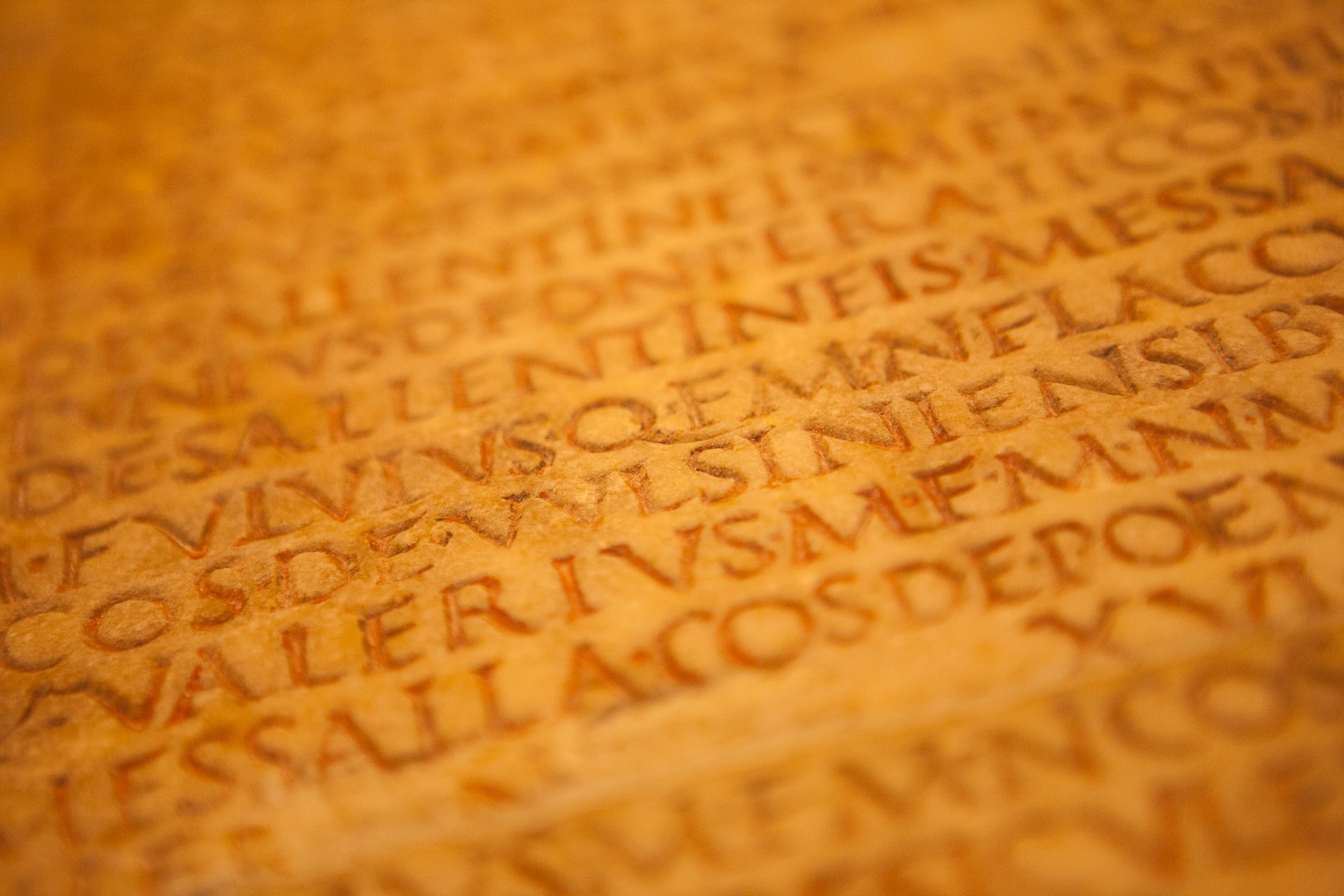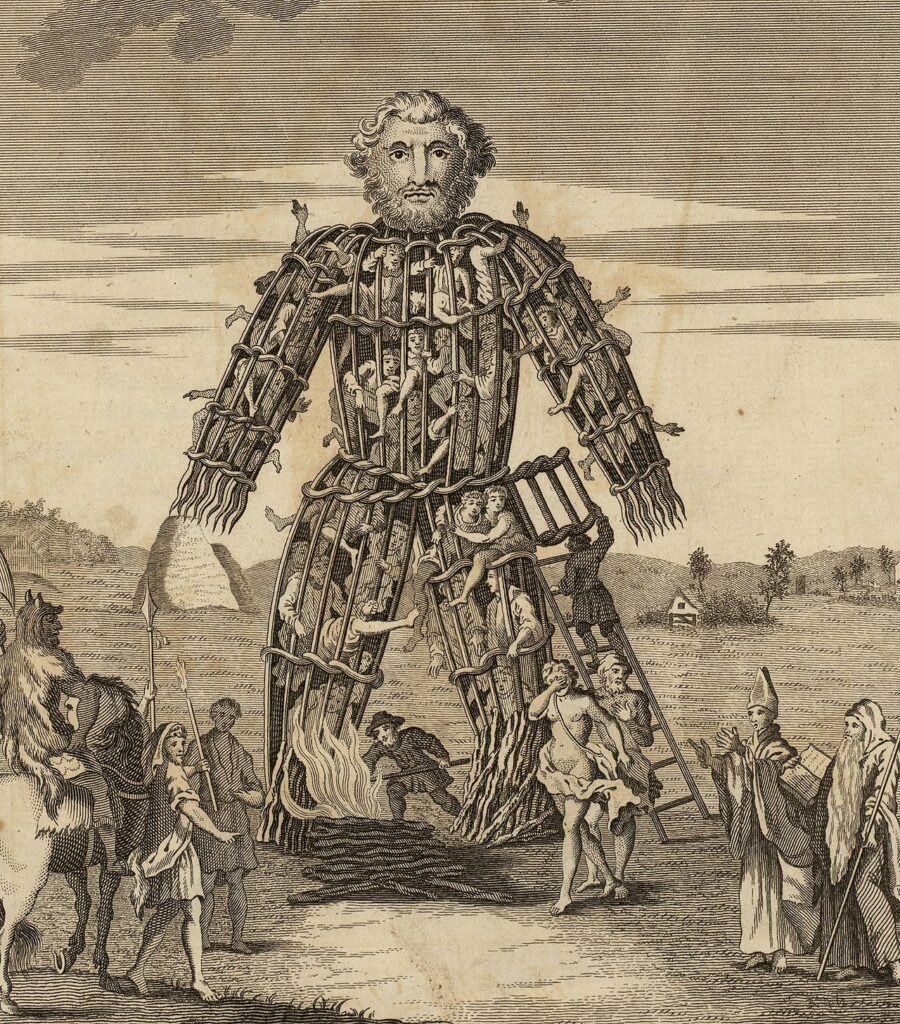Most Recent News


Popular News



More evidence has come out about the practice of ritual human sacrifice among the pagan druids.

In a past article, I wrote about how the Romans completely and utterly annihilated Carthage because of their horrifically evil practices of infant sacrifice:
The Evil Of Ancient Carthage
Justifiably Destroyed
Under modernity, the academics have done everything in their power to make our Greco-Roman heritage into an evil. One such example they would use while I was growing up was the Roman-led complete annihilation of Carthage, a city-state once far more powerful than either Athens or Rome. The “scientists” would always say that anything anti-Carthage was simply Roman propaganda. “Carthage was a healthy, benevolent, and progressive civilization that the evil totalitarian Romans mercilessly slaughtered”, as their sayings went.
But, as with all things the modernists say, they were wrong. They can’t hide the truth forever.
Ancient Carthage was horrifically evil. They worshipped Moloch through child sacrifice. It is a great thing that Rome not only destroyed them, but completely annihilated them from history.
The Israelites were commanded to completely annihilate the child-sacrificing Canaanites, but failed. The Romans, not even directly commanded by God, fulfilled where the Israeli jews failed.
But it was not just the Carthaginians that Rome purged of their wickedness.
Recent evidence has near conclusively proven the fact that the druids also performed ritual human sacrifice in ancient Celt lands. Until it was dealt with by the Romans.
One of my favorite leaders in all of world’s history, whom I have taken my pen name after, uncovered the horror of the druids. His legacy eventually annihilated them completely, as well. Julius Caesar detailed his incursion into Druid lands in the Commentarii de Bello Gallico, book VI.
An article recap is here:
Did the ancient Celts practice human sacrifice?
Ancient Irish bog bodies reveal telling evidence that the Celts ritually sacrificed their kings to the Gods.
Very little is truly known of the ancient Celts who left no written records. The names of many of the gods worshipped by them are known through Latin or Gallo-Latin inscriptions made in late pre-Roman and Roman times.
The rituals with which these gods were celebrated have long since been forgotten. Likewise, the druids, who were the “priests” of Celtic society, have been obscured by the passage of time and the secretive nature of their order.
[…]
An expert has stated that bog bodies found in Ireland have proven the belief that the Celts ritually sacrificed their kings to the Gods.
[…]
Human sacrifice was apparently a normal part of the Celtic rituals, especially of kings in hard times.
“The killings tend to be excessive,” Kelly, said “in that more is done to the bodies than would be required to bring about their deaths. Bog bodies may have their throats cut, been stabbed in the heart, and have other cut marks. However, it is absolutely not torture, but a form of ritual sacrifice.”
“The king had great power but also great responsibility to ensure the prosperity of his people. Through his marriage on his inauguration to the goddess of the land, he was meant to guarantee her benevolence. He had to ensure the land was productive, so if the weather turned bad, or there was plague, cattle disease, or losses in war, he was held personally responsible.”
[…]
In all of Ireland’s rich and ancient mythical tradition – there is only one reference to human sacrifice. The High King of Teamhair, Tigernmas, set up an idol called Cromm Cruach, and ordered that children be killed as offerings to it. It was, ironically, the druids of Ireland that brought an end to this bloody cult, murdering Tigernmas during a frenzied ceremony around the idol.
Elsewhere in Europe, it does appear that the Celts performed human sacrifice as part of their religious rituals. Since the Druids were the religious social class, they almost certainly would have participated in human sacrifices, and probably officiated at them.
This adds weight to theories and accounts from ancient Rome of Druidic killing, archeologists have said.
Experts say that Druids in the Celtic era possibly committed ritual human sacrifice on a mass scale. Julius Caesar, who led the first Roman landing in 55 BC, said the native Celts ‘believed that gods delighted in the slaughter of prisoners and criminals, and when the supply of captives ran short, they sacrificed even the innocent.’
We’ve known this for a while, but more evidence is always helpful.
Another article from 2009 points to this savagery:
Druids Committed Human Sacrifice, Cannibalism?
[…]
Recent gruesome finds appear to confirm the Romans’ accounts, according to Secrets of the Druids, a new documentary airing Saturday on the U.S. National Geographic Channel.
Perhaps the most incriminating evidence is the 2,000-year-old, bog-mummified body of Lindow Man, discovered in England in the 1980s. Lindow Man’s manicured fingernails and finely trimmed hair and beard suggest that he may have been of high status—possibly even a Druid himself.
At least one thing appears nearly certain about the ancient twentysomething: He was the victim of a carefully staged sacrifice.
Recent studies have revealed that Lindow Man’s head had been violently smashed and his neck had been strangled and slashed.
“You’ve got a rope tightened round his neck, and at the moment where the neck was constricted, the throat was cut, which would cause an enormous fountain of blood to rise up,” said archaeologist Miranda Aldhouse-Green, an archaeologist at Cardiff University in Wales and an expert on the Druids.
Another clue lay inside the body’s well-preserved gut: pollen grains from mistletoe, a plant that was sacred to the Druids. (Romans wrote that Druids cut mistletoe from trees with golden sickles.)
Lindow Man’s death is dated to around A.D. 60, when the Romans launched a new offensive in the island of Great Britain, currently part of the United Kingdom.
He may have been sacrificed to persuade the Celtic gods to halt the Roman advance, Aldhouse-Green said.
The leftist historians and professors keep arguing that the Romans rewrote history to fit their narrative, but the more evidence we get, the more truth comes out. And that truth is often that the Romans did not lie, but accurately reported what they saw in many barbarian lands.
Some of the ways the Druids killed their own was sadistic. If you haven’t, I encourage you to review the history of the “wicker man”. I’ll leave a picture here to provoke your curiosity:

Caesar is far from the only source we have attesting to this fact. There are plenty you can find with a quick search. One other of notable importance is Strabo’s Geography:
Strabo’s Geography
This form of human sacrifice can also be found in Strabo’s Geography. This ancient writer claimed that the Celts “devised a colossus of straw and wood” for the purpose of sacrifice. Unlike Caesar, however, Strabo records that “cattle and wild animals and all sorts of human beings” were thrown into this colossus, and then burnt. Strabo also asserts that the ‘wicker man’ was just one method of human sacrifice, and two other examples of how the druids performed human sacrifices are given, “they would shoot victims to death with arrows, or impale them in the temples”
Celtic ritual human sacrifice is where the concept of “trick or treat” comes from. The Druids would sacrifice humans for heavenly (read: satanic) rewards. They would “trick” the sacrifices (human and animal) while “treating” the demons.
Some people relate carving pumpkins to the myth of Stingy Jack, but it seems more likely given the historical record that the pumpkins/turnips would be carved by the druids and placed outside the houses of those who would be sacrificed, to let the spirits know that the offering was being made.
That was, after all, the entire purpose of the original Halloween (the Gaelic-Druid “Samhain”). This celebration was conducted on the beginning of the “darker half” of the year. It was associated with human sacrifices and bonfires given to the “Otherworld”. The portal was supposedly more open to the darkness (since it was that time of year). The Druids refused to write down their own practices, which adds further mystery to the full extent of this festival. But rest assured: it looked nothing like the modern watered-down neopagan/Wiccan Samhain or Halloween looks today.

The Ancient Romans certainly weren’t clean of this wickedness themselves. It wasn’t until near the time of Caesar that the act was banned in the first place. According to Pliny the Elder, human sacrifice was banned by law during the consulship of Publius Licinius Crassus and Gnaeus Cornelius Lentulus in 97 BC. Caesar entered in on 49 BC.
Although most historians do say that in ancient Rome, human sacrifice was infrequent. Additionally, Roman authors who wrote about it often “contrasted their own behavior with that of people who would commit the heinous act of human sacrifice. These authors make it clear that such practices were from a much more uncivilized time in the past, far removed.”
Contrast this with Germanic/Scandinavian/Slavic and many other peoples, who continued to commit human sacrifice well into the Viking Age in the 10th century. The Romans banned the practice a literal millennium before. Credit where it is due.
Whether or not you believe the Roman Empire was wicked itself—Thank Caesar and the Roman Empire for destroying these demented fools.
Rome was not perfect. None of us are. But they set the ship on course for the removal of many of these horrific customs, and for that, I am grateful.
Read Next: Mostly Peaceful Human Sacrifice
If you enjoyed this article, bookmark the website and check back often for new content. New articles most weekdays.
You can also keep up with my writing by joining my monthly newsletter.
Help fight the censorship – Share this article!

(Learn More About The Dominion Newsletter Here)
For the Romans gladiatorial games were their form of human sacrifice. In fact they were adopted from the Etruscans and were originally funerary honours for prominent citizens.
I would be alright with a warrior’s death. Much preferred to death by old age, or death as a child during a ritualistic sacrifice to appease Baal.